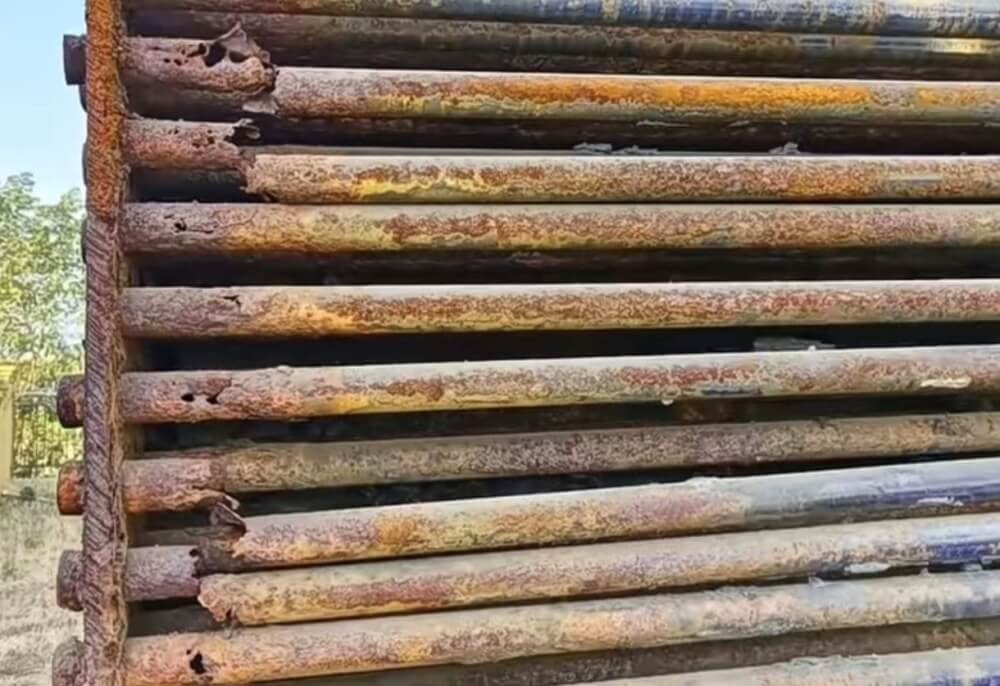Preventing unplanned shutdowns in power generation units is essential for the long-term stable development of power generation enterprises. To achieve a “zero unplanned shutdown” goal, it is necessary to comprehensively advance efforts in operation management, maintenance management, technological innovation, and targeted governance aimed at reducing unplanned shutdowns. A key aspect of this effort is ensuring equipment reliability. Let’s explore how to effectively resolve the issue of low-temperature corrosion in air preheaters during power plant operations!

Problem: Low-temperature corrosion generally occurs in the low-temperature section of the air preheater, where the heating surface wall temperature is at its lowest.
Cause: The sulfur in the fuel combusts to form SO₂, which, with the assistance of a catalyst, oxidizes to produce SO₃. This SO₃ then reacts with water vapor in the flue gas to create sulfuric acid (H₂SO₄) vapor. The presence of sulfuric acid vapor raises the dew point of the flue gas significantly, leading to the condensation of sulfuric acid on the wall surfaces, resulting in corrosion.
Ash Deposition Worsens Corrosion: Fly ash in the flue gas easily adheres to the acid liquid on the wall surfaces, forming deposits. Metal oxides in the ash react with the acid to form water-hardening sulfates, which cause the ash to harden. This process gradually reduces the flow area of the air preheater pipes, intensifying both corrosion and ash deposition. This creates a vicious cycle, ultimately leading to severe metal corrosion.
Corrosion Hazards: Deterioration in air supply combustion, reduced boiler efficiency, compromised heat transfer efficiency of the air preheater, increased ash deposition, higher resistance in the flue gas ducts, and a decrease in the reliability and thermal efficiency of boiler operations.
Preventive Measures for Low-Temperature Corrosion in Air Preheaters
- During winter, operate the boiler air heater or recirculate preheated air from the recirculation duct to the air blower inlet, mixing it with cold air to raise the temperature at the air preheater inlet. It ensures that the cold end wall temperature of the air preheater stays within the specified range.
- Lower the flue gas dew point to reduce sulfuric acid vapor formation. Maintaining an appropriate excess air ratio can help reduce the formation of sulfur trioxide in the flue gas.
- Improve ash removal procedures in the air preheater by installing saw-vibration ash cleaning devices. These allow for continuous online ash cleaning, preventing ash from accumulating and hardening, and thereby avoiding a vicious cycle.
- Implement proper maintenance measures for the air preheater after the boiler has been shut down.
- Use more corrosion-resistant materials for the air preheater, such as rare earth alloy composite pipes that combines sacrificial anode protection with shielded anti-corrosion layers. Under similar operating conditions, its service life is twice that of enamel pipes.
About Us
Shandong Bokk Tech is dedicated to solve the problem such as ash blockage, corrosion and excessive exhaust gas temperature in the tubular air preheater of small and medium-sized boilers. We primarily manufacture automatic cleaning devices for tubular air preheaters and corrosion-resistant heat pipes. Our products are widely used in the thermal power plants, chemical plants, new energy sector, etc.
We offer customized services to customers around the world, allowing us to adjust product dimensions and other specifications based on your specific needs, to improve air preheater heat efficiency.
Share The Post
